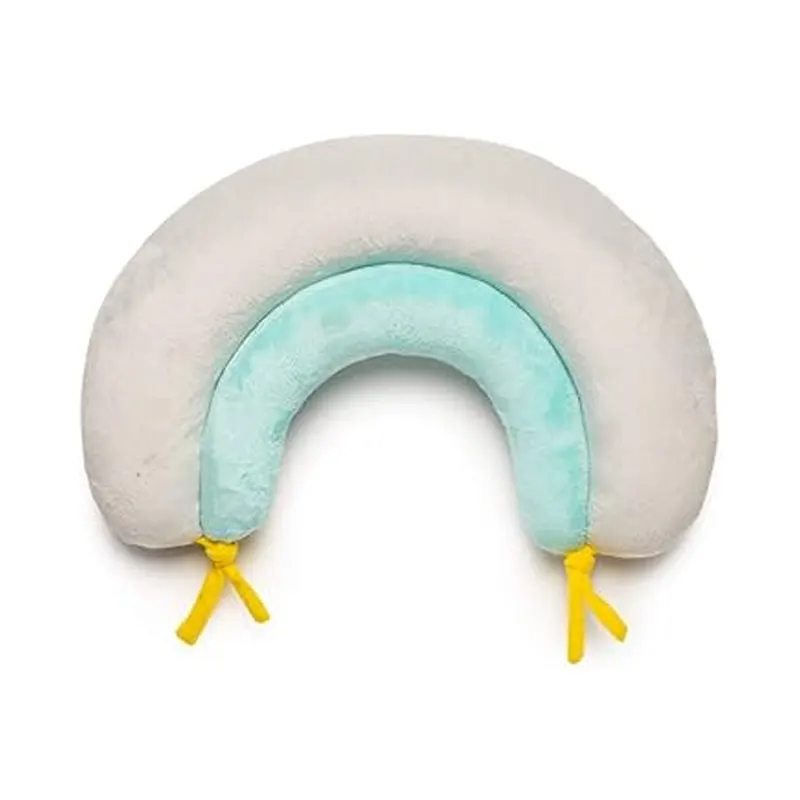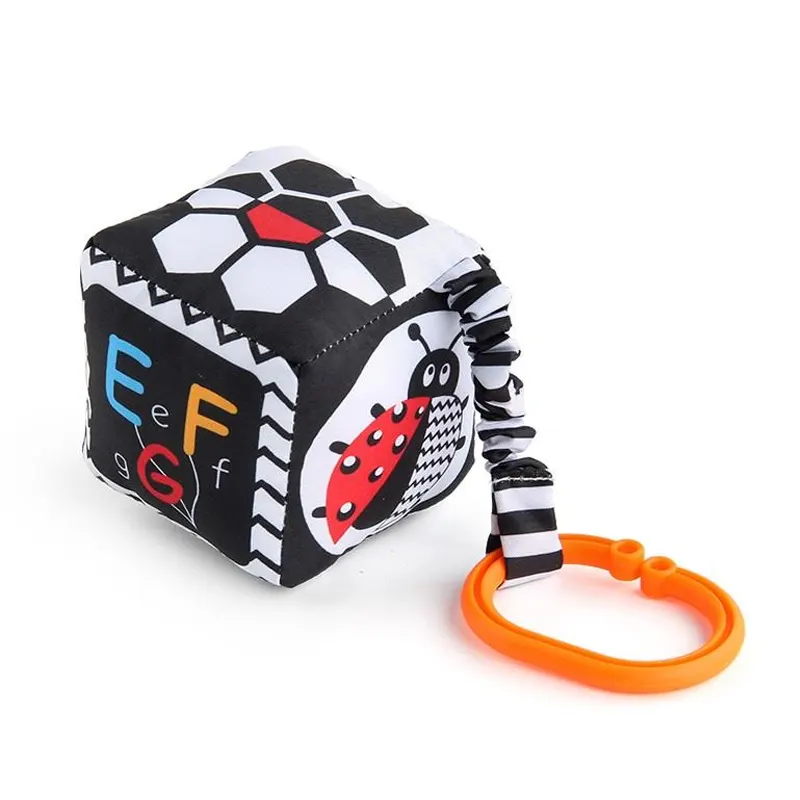Is your baby spending most of their day lying on their back? While this is a common resting position, babies also need opportunities to strengthen their growing muscles. This is where tummy time, a simple practice of placing your baby on their stomach while they are awake and supervised, becomes essential.
This position is a powerful workout for your baby. It directly encourages the development of strong neck, shoulder, and back muscles. These are the foundational muscles required for crucial later developmental milestones, such as rolling over, sitting up, and crawling.
But for many parents, knowing when and how to start can be confusing, especially if their baby fusses. This article provides a practical guide on how to safely introduce tummy time, tips for making it an enjoyable part of your daily routine, and how it supports both physical development and your connection with your child.
What Is Tummy Time?
Tummy time refers to the practice of placing your baby on their stomach while they are awake and carefully supervised. This simple daily activity is essential for helping babies strengthen their neck, shoulders, arms, and core muscles. It also prepares them for major developmental milestones such as rolling, sitting, and crawling.
The goal of tummy time is to encourage babies to lift their heads and use their muscles to explore the world around them. When babies spend too much time lying on their backs, they can develop flat spots on the back of the head and may experience delayed 운동 기술. By including tummy time in their daily routine, parents help babies build strength, coordination, and confidence through natural movement.
Benefits of Tummy Time
Tummy time is one of the most valuable daily activities for infants. It helps babies build strength, coordination, and awareness during the earliest months of life. Each short session offers a variety of developmental benefits that support both the body and the mind.

1. Strengthens Muscles and Supports Motor Development
When babies spend time on their stomachs, they use their muscles to lift and turn their heads, push up with their arms, and balance their bodies. These movements strengthen the neck, shoulders, arms, and core muscles that are essential for physical growth. As babies gain control and stability, they naturally begin to reach, roll, and crawl. Tummy time provides the foundation for all future movement and helps babies progress toward major milestones with confidence.
2. Helps Prevent Flat Head Syndrome
Flat head syndrome, or positional plagiocephaly, can develop when babies spend too much time lying on their backs. Tummy time helps reduce pressure on one part of the head by allowing the baby to rest and move in different positions. This routine supports healthy skull development and a naturally rounded head shape.
3. Encourages Visual and Sensory Development
Tummy time gives babies a new perspective on the world. As they lift their heads, they learn to focus on faces, track moving objects, and notice colors and shapes. These small visual tasks strengthen eye coordination and attention. At the same time, babies experience various textures and surfaces, which stimulate sensory learning and spatial awareness.
4. Promotes Cognitive and Emotional Growth
Tummy time also plays an important role in emotional and cognitive development. When parents join their babies on the floor, talk gently, and maintain eye contact, it creates a sense of safety and connection. These interactions encourage curiosity, build confidence, and help the baby feel secure while exploring new movements.
5. Prepares Babies for Future Milestones
The balance, coordination, and strength developed during prone playtime prepare babies for more advanced movements later in life. Each session brings them closer to sitting, crawling, and standing. Consistent practice helps babies become active, independent, and ready to explore their surroundings.
학습에 영감을 주는 공간을 디자인할 준비가 되셨나요? 교실의 필요에 맞춘 맞춤형 가구 솔루션을 위해 저희에게 문의하세요.
When to Start Tummy Time?
Many parents wonder when the right time is to begin tummy time, especially during the delicate early days of a newborn’s life. The answer may surprise you—tummy time can and should start as early as the first day home from the hospital. As long as your baby is healthy and full-term, there’s no need to wait.
The American Academy of Pediatrics recommends starting tummy time from birth, with short, supervised sessions lasting just a few minutes at a time. In the beginning, these sessions may only last one to two minutes, two to three times a day. The goal is to gradually increase both the frequency and duration as your baby grows stronger and more comfortable on their stomach.
It’s important to keep in mind that tummy time should always be done while your baby is awake and under close supervision. It is not safe for babies to sleep on their stomachs, so if your baby gets sleepy during prone playtime, it’s time to move them to their back in a safe sleep environment.
By starting tummy time early and making it a daily habit, you’ll help your baby develop essential physical skills and lay the groundwork for future milestones. The earlier you begin, the easier it becomes to integrate into your baby’s routine and the more benefits your baby will gain from this simple but effective practice.
- Was born prematurely
- Has frequent spit-up or signs of reflux
- Has medical or developmental conditions
- Shows signs of low muscle tone or unusual stiffness
- Has recently undergone surgery
How to Do Tummy Time with Newborn?
Tummy time with a newborn doesn’t have to be complicated. In fact, the earlier you begin, the easier it is for your baby to get used to it. With the right approach, it can become a calming, engaging part of your daily routine.
Ready a Clean, Firm Surface
Before starting prone playtime, it’s essential to prepare a safe and supportive environment. A clean, firm surface gives your newborn the stability they need to engage their muscles effectively. Unlike soft beds or couches that can sink and restrict movement, a firm surface allows your baby to push up, turn their head, and build strength without resistance from the material underneath.
Start with Skin-to-Skin Contact
One of the best ways to begin tummy time during the first few days of life is by placing your baby on your chest while you’re lying down. This is a gentle and comforting introduction that combines prone playtime with skin-to-skin bonding. Your baby will be encouraged to lift their head to look at you, which helps activate neck and shoulder muscles in a natural, soothing environment.
Use a Soft Blanket or Play Mat
As your baby grows more alert and aware, you can transition to using a tummy time blanket or a soft play mat on the floor. Lay your baby down on their stomach for short periods, starting with 1 to 3 minutes, 2 to 3 times a day. Make sure the surface is firm and safe, and always supervise closely.

Make Tummy Time Engaging
Newborns respond well to faces, voices, and high-contrast visuals. Place a small mirror or a black-and-white toy nearby to stimulate your baby’s curiosity. Talk softly, sing, or make gentle facial expressions to help distract and entertain them during tummy time. These interactions not only support physical development but also nurture bonding and early communication skills.
Respond to Baby’s Cues
It’s normal for some newborns to fuss during tummy time. If your baby seems frustrated or tired, take a break and try again later. Frequent, short sessions throughout the day are more effective than forcing long, uncomfortable stretches. Watch for signs of fatigue, such as rubbing eyes, turning away, or whining, and always end prone playtime on a positive note.
Always Supervise Closely
Safety is key when practicing tummy time. A newborn should never be left alone on their stomach, even for a moment. Stay close by, maintain eye contact, and ensure the surface is firm, flat, and free of soft bedding or objects. As your baby becomes stronger, you can increase prone playtime duration gradually, building a healthy and consistent routine.
Best Products to Support Tummy Time
To make tummy time both effective and enjoyable, it helps to use simple and safe products that provide comfort, stimulation, and support. The right tools can encourage babies to stay longer on their stomachs, explore their surroundings, and build the strength they need to reach important developmental milestones.
1. Tummy Time Mats and Play Blankets
A soft, padded surface is essential for prone playtime. Tummy time mats and activity blankets give babies a comfortable space to move freely and safely. Many mats come in colorful designs that stimulate visual engagement and are easy to clean. Choose materials that are non-toxic and gentle on the skin.



2. Supportive Tummy Time Pillows
Some babies need extra help during tummy time, especially in the first few months. Small crescent-shaped pillows or rolled towels placed under the chest can provide gentle elevation. This position helps babies lift their heads more easily and reduces frustration during the early stages of tummy time.



3. Baby Mirrors
A mirror placed at baby’s eye level can turn tummy time into a playful experience. Babies enjoy looking at faces, including their own. Baby-safe mirrors are made from shatterproof materials and help promote visual tracking, attention span, and early self-recognition.



4. High-Contrast and Sensory Toys
To keep tummy time interesting, place toys just within reach to encourage reaching and movement. High-contrast black and white toys are especially engaging for newborns. Toys that make sounds or have different textures can also support sensory development and keep babies focused for longer periods.



학습에 영감을 주는 공간을 디자인할 준비가 되셨나요? 교실의 필요에 맞춘 맞춤형 가구 솔루션을 위해 저희에게 문의하세요.
How Long Should Tummy Time Last?
The length of tummy time depends on your baby’s age, comfort level, and strength. In the beginning, short and gentle sessions are best. Newborns may only tolerate a few minutes on their stomachs before getting tired, but even these brief moments provide valuable benefits for muscle and sensory development.
During the first month, aim for about three to five minutes of tummy time, two or three times each day. As your baby becomes stronger and more alert, increase each session gradually. By the time your baby is around three months old, they can usually enjoy a total of twenty to thirty minutes of tummy time spread throughout the day.
Between four and six months, babies gain better head control and can stay on their stomachs for longer periods. Many will push up on their forearms, reach for toys, or roll to their backs when they have had enough. At this stage, a total of forty to sixty minutes of tummy time per day, divided into short sessions, supports healthy strength and balance.
Always let your baby’s cues guide the length of tummy time. If your baby becomes fussy or tired, it is fine to stop and try again later. Frequent, shorter sessions are more effective than forcing long stretches of time. Consistency is more important than duration. When tummy time becomes part of your baby’s daily play routine, progress happens naturally. With patience and gentle encouragement, your baby will gradually build the strength to enjoy longer sessions and reach new developmental milestones.
What to Do If Your Baby Hates Tummy Time?
It’s not uncommon for babies to fuss, cry, or resist tummy time, especially in the early weeks. This doesn’t mean your baby will never enjoy it. It simply takes time for them to get used to a new position that requires more effort and strength. With consistency, creativity, and patience, you can help your baby gradually accept and even enjoy tummy time. Here are some effective strategies to make tummy time more comfortable and engaging:

- Start with Short, Frequent Sessions
Instead of trying to complete long sessions, begin with just 1–2 minutes several times a day. Slowly build up as your baby gets stronger and more comfortable. - Try Tummy Time on Your Chest
For newborns especially, lying tummy-down on a parent’s chest feels safe and soothing. It also encourages bonding while building neck and upper body strength. - Use a Rolled Towel or Tummy Time Pillow
Placing a small rolled-up towel or specially designed tummy time pillow under your baby’s chest can reduce the strain and help them lift their head more easily. - Get Down on Their Level
Lie face-to-face with your baby, talk to them, make eye contact, or sing songs. Your presence and voice are incredibly comforting and motivating. - Use Mirrors and Colorful Toys
Place an unbreakable mirror or bright, high-contrast toys in front of your baby. Visual stimulation helps distract and entertain them during tummy time. - Try After Naps or Diaper Changes
Choose times when your baby is well-rested and content. Avoid doing tummy time when they’re hungry, overly tired, or fussy.
결론
Tummy time is one of the simplest and most effective ways to support your baby’s physical and emotional development. Through this daily activity, babies build strong muscles, improve balance, enhance sensory awareness, and gain confidence in movement. It also strengthens the bond between parents and children as they share playful and encouraging moments together.
By starting tummy time early and practicing it consistently, parents help their babies develop the foundation for essential milestones such as rolling, crawling, and sitting. The key is to keep each session safe, enjoyable, and filled with positive interaction.
~에 Westshore, we understand how important a well-prepared learning environment is for early growth. We offer a wide range of products that support tummy time and infant play, including soft mats, sensory toys, mirrors, and safe floor furniture designed for early exploration. Each product is made with care, comfort, and quality in mind to help every baby grow strong and curious through meaningful play.






